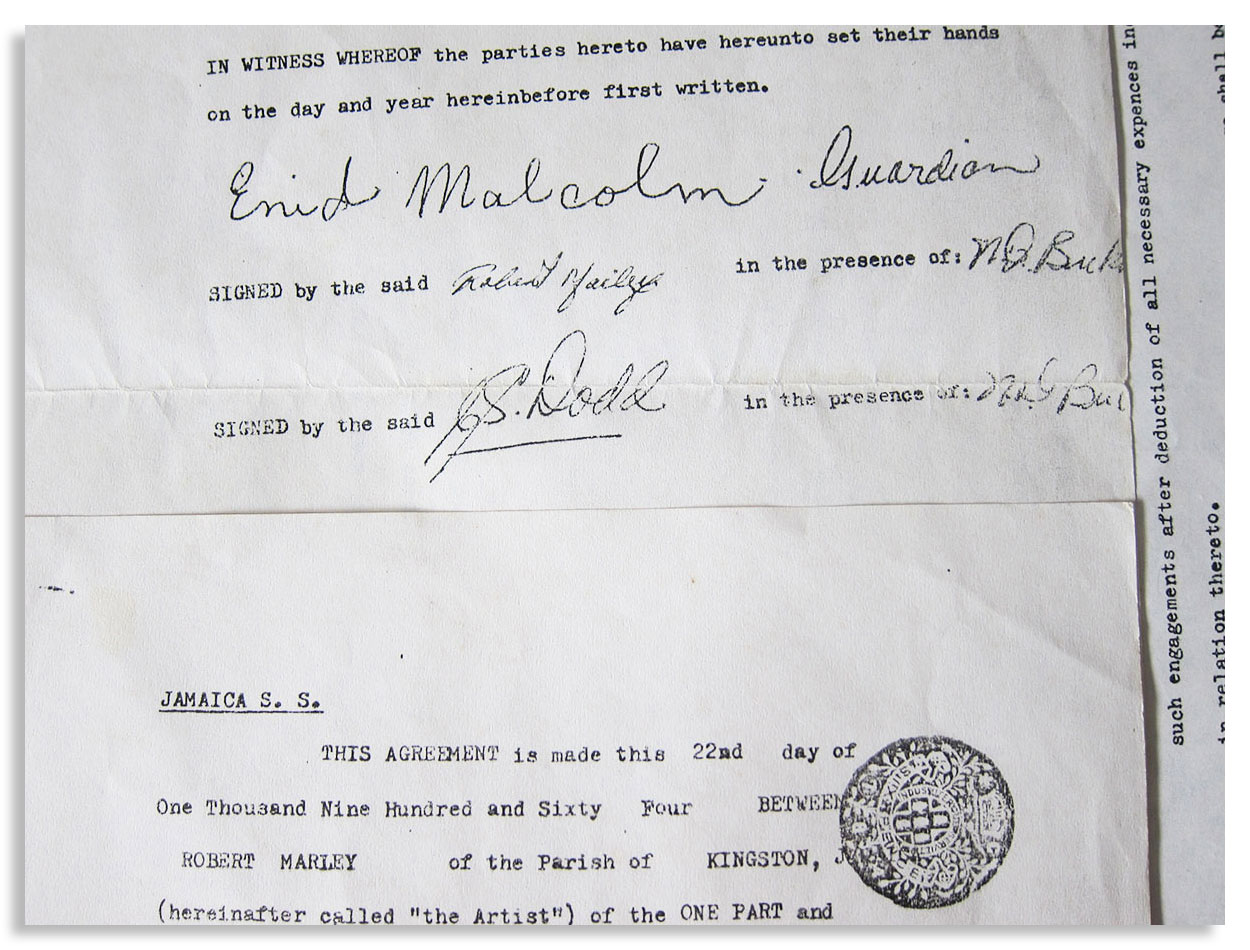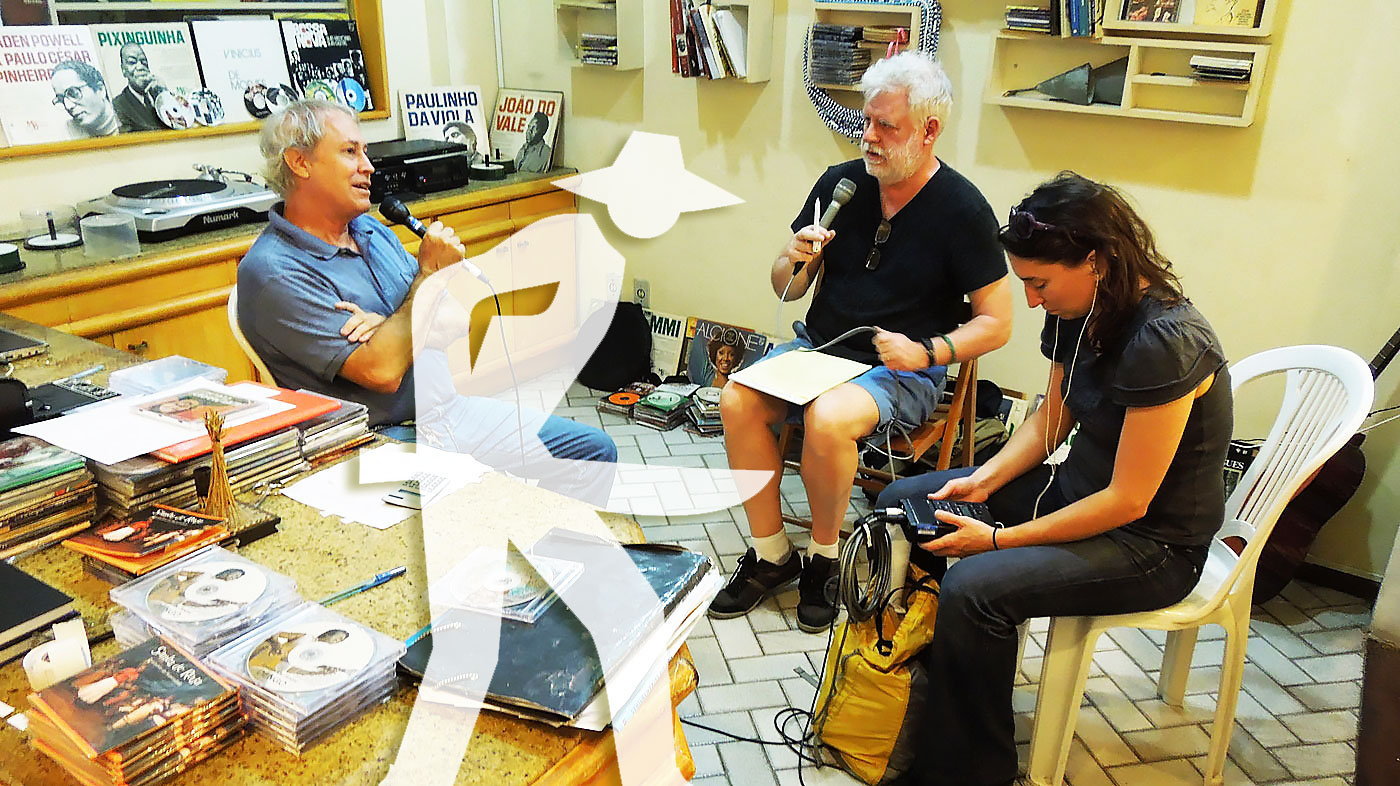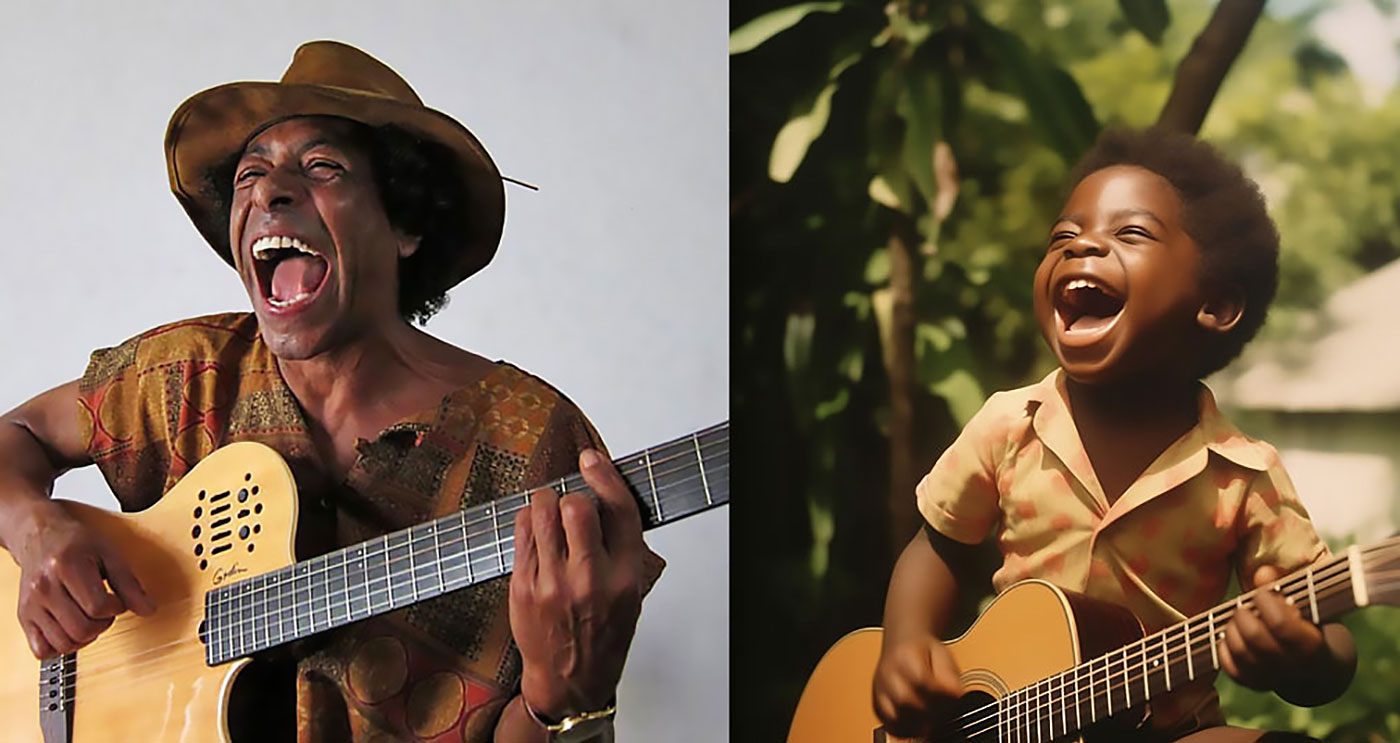CURATION
- from this page: by Title Holder
Network Node
- Name: Demond Melancon
- City/Place: New Orleans, Louisiana
- Country: United States
Life & Work
-
Bio:
Demond Melancon works solely with a needle and thread to sew glass beads onto canvas. He began this form of art in 1992 when he first became part of a 200+ year old culture known as the Black Masking Culture of New Orleans. Today as a Big Chief, Melancon is well known for creating massive suits which he wears as a Black Masker in ceremonial battles on Mardi Gras day. The suits he creates are sculptural forms based on the size of his body and are composed of intricately beaded patches revealing a collective visual narrative.
Over the past five years, Melancon has developed an emerging contemporary art practice using the same beading techniques he’s applied over the past 28 years as a Black Masker. His work has been exhibited at the Victoria & Albert Museum in London, Art Miami, the Museum of Contemporary African Diasporan Art in Brooklyn, and the Arthur Roger Gallery in New Orleans. Many of Melancon’s works honor Black subjects historically excluded from the artistic canon, often reflecting untold stories from bygone pasts to remind viewers of their interwoven shared ancestries and diasporic histories. As a self-taught artist, Melancon has been deeply influenced by the masters: from contemporary artists such as Kerry James Marshall, Barkley Hendricks, and Basquiat to Renaissance artists like Caravaggio and Botticelli.
The context of Melancon’s work reflects a broad variety of stylistic influences, features imagery rich with symbolism and meaning, and confronts stereotypical representations of Black identity. Melancon’s work reflects his deep interest in exploring the possibilities of visual storytelling and redefining the traditions of portraiture. Demond Melancon is one of the few artists to pioneer the use of glass beads as an accepted contemporary art medium in the larger arts sector. By reconsidering predominant narratives throughout our history, Melancon deliberately repositions historically overlooked subjects and reimagines institutional portrayal of the Black subject.
Melancon was born in 1978 and grew up in the Lower Ninth Ward of New Orleans. He was initially taught by a prolific elder named Big Chief Ferdinand Bigard. Melancon went on to study under Nathanial Williams in connection with a 1993 Louisiana Folklife Apprenticeship Grant. Melancon joined the Seminole Hunters and masked as a Spy Boy for over 15 years under Big Chief Keitoe Jones. In 2012 the elders of the Black Masking community declared that Melancon would then be known as Big Chief Demond Melancon of the Young Seminole Hunters, his very own tribe based in the Lower Ninth Ward of New Orleans.
He has been part of the Black Masking Culture of New Orleans since 1992 and second-lining since he began to walk. When Demond was 14 years old, he had the opportunity to learn from several influential elder Big Chiefs. They not only taught him how to sew and bead intricate suits, but also about the history and traditions of the Black Masking Culture of New Orleans – which began over 200 years ago. Prior to the Black Masking elders declaring Demond would become the Big Chief of his very own tribe, he had become very well-known as being a fierce Spy Boy for the Seminole Hunters. Big Chief Demond is well-known for his meticulous hand-sewn beadwork, use of very small beads, and attention to details often combining various types of beads (opaque, transparent, matte, metallic) and a broad spectrum of colors for effect.
The role of the Big Chief is to command and lead the tribe during practices throughout the year and in ceremonial battles on Mardi Gras Morning. A Big Chief’s prestige is often not only measured by the beauty and intricacy of his suits, but also by his command and presence within the community.
Two factors that contribute to the technical difficulty the style of Black Masking suits Demond creates are the massive size of the main aprons (the portion of a suit worn from the waist to the ankles) and the incredibly small size of the beads he uses to create them. Typically measuring at over 50 inches wide, Demond’s main aprons are also created using smaller size beads (referred to as size 11/0s which measure at 2.1 mm) than most other Black Maskers of New Orleans use. Because of the size of his suits coupled with his use of smaller beads, Demond’s suits generally take over 4,000 hours of sewing 1 million glass beads.
Contact Information
- Contact by Webpage: http://www.demondmelancon.com/contact
-
Management/Booking:
Arthur Roger Gallery
432 Julia Street
New Orleans, LA 70130
+1 (504) 522-1999
[email protected]
www.arthurrogergallery.com
Media | Markets
- ▶ Instagram: qadamawi
- ▶ Website: http://www.demondmelancon.com
- ▶ Articles: http://www.demondmelancon.com/press
Clips (more may be added)
Like stars coalescing into a galaxy, creators in the Matrix mathematically gravitate to proximity to all other creators in the Matrix, no matter how far apart in location, fame or society. This gravity is called "the small world phenomenon". Our brains contain small world networks. Human society is a small world network wherein over 8 billion human beings average 6 or fewer steps apart. This Matrix is a small world network...
![]() Wolfram MathWorld on the Small World Phenomenon
Wolfram MathWorld on the Small World Phenomenon
![]() Matemática Wolfram sobre o Fenômeno Mundo Pequeno
Matemática Wolfram sobre o Fenômeno Mundo Pequeno
"In a small world great things are possible."

It's not which pill you take, it's which pathways you take. Pathways originating in the sprawling cultural matrix of Brazil: Indigenous, African, Sephardic and then Ashkenazic, European, Asian... Matrix Ground Zero is the Recôncavo, contouring the Bay of All Saints, earthly center of gravity for the disembarkation of enslaved human beings — and the sublimity they created — presided over by the ineffable Black Rome of Brazil: Salvador da Bahia.
("Black Rome" is an appellation per Caetano Veloso, son of the Recôncavo, via Mãe Aninha of Ilê Axé Opô Afonjá.)
"Dear Sparrow: I am thrilled to receive your email! Thank you for including me in this wonderful matrix."
—Susan Rogers: Personal recording engineer for Prince, inc. "Purple Rain", "Sign o' the Times", "Around the World in a Day"... Director of the Berklee Music Perception and Cognition Laboratory
"Thanks! It looks great!....I didn't write 'Cantaloupe Island' though...Herbie Hancock did! Great Page though, well done! best, Randy"
"We appreciate you including Kamasi in the matrix, Sparrow."
—Banch Abegaze: manager, Kamasi Washington
"This is super impressive work ! Congratulations ! Thanks for including me :)))"
—Clarice Assad: Pianist and composer with works performed by Yo Yo Ma and orchestras around the world
"Dear Sparrow, Many thanks for this – I am touched!"
—Julian Lloyd-Webber: UK's premier cellist; brother of Andrew Lloyd Webber (Evita, Jesus Christ Superstar, Cats, Phantom of the Opera...)
"Thanks, this is a brilliant idea!!"
—Alicia Svigals: World's premier klezmer violinist
Developed here in the Historic Center of Salvador da Bahia ↓ .
![]() Bule Bule (Assis Valente)
Bule Bule (Assis Valente)
"♫ The time has come for these bronzed people to show their value..."
Production: Betão Aguiar
MATRIX MODUS OPERANDI
Recommend somebody and you will appear on that person's page. Somebody recommends you and they will appear on your page.
Both pulled by the inexorable mathematical gravity of the small world phenomenon to within range of everybody inside.
And by logical extension, to within range of all humanity outside as well.
MATRIX (PARDAL)
I'm Pardal here in Brazil (that's "Sparrow" in English). The deep roots of this project are in Manhattan, where Allen Klein (managed the Beatles and The Rolling Stones) called me about royalties for the estate of Sam Cooke... where Jerry Ragovoy (co-wrote Time is On My Side, sung by the Stones; Piece of My Heart, Janis Joplin of course; and Pata Pata, sung by the great Miriam Makeba) called me looking for unpaid royalties... where I did contract and licensing for Carlinhos Brown's participation on Bahia Black with Wayne Shorter and Herbie Hancock...
...where I rescued unpaid royalties for Aretha Franklin (from Atlantic Records), Barbra Streisand (from CBS Records), Led Zeppelin, Mongo Santamaria, Gilberto Gil, Astrud Gilberto, Airto Moreira, Jim Hall, Wah Wah Watson (Melvin Ragin), Ray Barretto, Philip Glass, Clement "Sir Coxsone" Dodd for his interest in Bob Marley compositions, Cat Stevens/Yusuf Islam and others...
...where I worked with Earl "Speedo" Carroll of the Cadillacs (who went from doo-wopping as a kid on Harlem streetcorners to top of the charts to working as a janitor at P.S. 87 in Manhattan without ever losing what it was that made him special in the first place), and with Jake and Zeke Carey of The Flamingos (I Only Have Eyes for You)... stuff like that.

Yeah this is Bob's first record contract, made with Clement "Sir Coxsone" Dodd of Studio One and co-signed by his aunt because he was under 21. I took it to Black Rock to argue with CBS' lawyers about the royalties they didn't want to pay (they paid).
MATRIX MUSICAL
I built the Matrix below (I'm below left, with David Dye & Kim Junod for U.S. National Public Radio) among some of the world's most powerfully moving music, some of it made by people barely known beyond village borders. Or in the case of Sodré, his anthem A MASSA — a paean to Brazil's poor ("our pain is the pain of a timid boy, a calf stepped on...") — having blasted from every radio between the Amazon and Brazil's industrial south, before he was silenced. The Matrix started with Sodré, with João do Boi, with Roberto Mendes, with Bule Bule, with Roque Ferreira... music rooted in the sugarcane plantations of Bahia. Hence our logo (a cane cutter).
A Massa (do povo carente) / The Masses (of people in need)

-
Add to my PlaylistA Massa - Raymundo Sodré (7,093 plays)
-
Add to my PlaylistSina de Cantador - Raymundo So... (6,909 plays)
-
Add to my PlaylistMagnetismo - Raymundo Sodré ... (6,353 plays)
-
Add to my PlaylistSacando a Cana - Raymundo Sodr... (5,957 plays)
-
Add to my PlaylistMêrêrê - Raymundo Sodré (5,465 plays)
-
Add to my PlaylistJardim do Amor - Raymundo Sodr... (4,677 plays)
-
Add to my PlaylistDebaixo do Céu - Raymundo Sodr... (4,151 plays)
-
Add to my PlaylistDesejo de Amar - Raymundo Sodr... (3,861 plays)
-
Add to my PlaylistOração pra Yá Oxum - Raymundo ... (3,741 plays)
-
Add to my PlaylistYá África - Raymundo Sodré (3,509 plays)
-
Add to my PlaylistMeu Rio, Cadê o Papel - Raymun... (3,177 plays)
-
Add to my PlaylistCasa de Trois - Raymundo Sodré... (2,896 plays)
-
Add to my PlaylistMulher é Laço que Prende o Coração do Vaqueiro - R... (2,556 plays)


































































































































































































































































































































































































































































